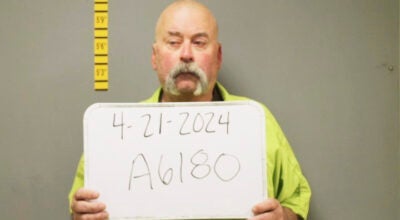Safe Wind lobbies state over turbines
Published 10:00 am Monday, July 13, 2009
After a public hearing June 29, Safe Wind of Freeborn County is continuing to work to influence the placement of the turbines for the Bent Tree Wind Farm in Freeborn County.
Wisconsin regulators last week gave their permission for Wisconsin Power & Light to build the wind farm, though now it needs Minnesota approval.
Safe Wind is working to get its message out before the state Public Utilities Commission decides later this summer whether to approve the site permit and certificate of need for the project, which if passed would give the green light to construction.
One of the biggest concerns of Safe Wind is the health effects of the noise produced by the wind turbines. Katie Troe of Safe Wind said the turbines produce noises that can both be heard, and low-frequency sounds that some studies say are amplified and trapped in homes. Troe said some of the sound is audible and some is not.
“We’re dealing with an unknown. This is something that’s fairly new to Minnesota, at least more developed areas of Minnesota, and there are so many unknowns,” said Amy Wasson, a lawyer for Safe Wind in Freeborn County.
“So it’s kind of hard to say, ‘Yes, this is definitely what we want,’ because we’re dealing with something that’s just unknown,” she added.
On March 19, Safe Wind requested contested hearings concerning the site application and certificate of need for Bent Tree. The PUC denied the contested hearings, but a public hearing was held June 29.
Administrative Law Judge Steve M. Mihalchick oversaw the hearing. The public hearing gave people the opportunity to ask questions, call witnesses and present research. Mihalchick will compile all the information and testimony from the hearing, and he’ll then present that information to the PUC.
The PUC will review the information before making a decision on the site permit and the certificate of need.
The PUC could rule on the site permit and the certificate of need by late July or August.
After the PUC’s decision, Wasson said Safe Wind would shift its focus to the approval process for the transmission lines at the county level.
“It’s the only avenue we have left,” Wasson said.
“I think the setbacks are the biggest issue for Safe Wind,” she said.
“Because I think everyone realizes that we’re not going to be able to completely stop them,” Wasson added. “While we would like to, that’s just not realistic.”
The Minnesota Department of Health prepared a paper called Public Health Impacts of Wind Turbines, and that was discussed at the hearing.
The paper did not give recommendations of what to do, and Troe said safe wind is not giving recommendations of what to do.
However, in her statements at the public hearing, Troe gave a condition of 1,500-foot setbacks, but she said that is more for aesthetics than for health.
According to Troe, there has been some research and papers written on the possible effects of these sounds, some which are inaudible to the human ear. She said some of the effects include lack of concentration, headaches, mood swings, chest problems, shortness or breath, tingling, fatigue and heart palpitations.
“What is the exact effect of these on people, on animals, pets, cattle, migratory birds? We don’t know the answers. And that’s the most frustrating thing is we really don’t know if there is a bad case,” Wasson said.
One of Safe Wind’s goals is to have a third party assist with the modeling, or the placing of the turbines in relation to homes. She said the independent group would add balance to the process.
“On setbacks, I think they need professional help. I’m not professional, and I’m not claiming to be professional. But I feel like I can read these studies and I can see that there is a need that Minnesota needs to look at this in different light. We need to investigate this. You don’t just let the turbine company or even the energy company do their own modeling,” Troe said.
One reason Troe and Safe Wind did not make any more specific recommendations at the hearing was because she said each turbine will be different based on placing and terrain, so it may be difficult to have a set standard.
For example, Troe said certain sound waves can be amplified or deadened by things like trees and hills.
“If you properly site a turbine they will all be different …” Troe said. “I’m not saying 15,000 feet is going to solve that problem.”
Troe said Safe Wind is not a group opposing wind energy or the building of wind turbines, the group is seeking proper setbacks from residences.
“We’re just for properly sited turbines,” Troe said.
With the PUC decision in the near future, Wasson is pleased with the efforts of Safe Wind.
“I feel as if we’ve done everything we possibly could, and if that’s not enough, than that’s just the way it was supposed to be,” Wasson said. “We really feel like we went down every road and checked out every avenue that we possibly could in order to make this a project that’s going to be safe for the people that have to live under and near it.”





